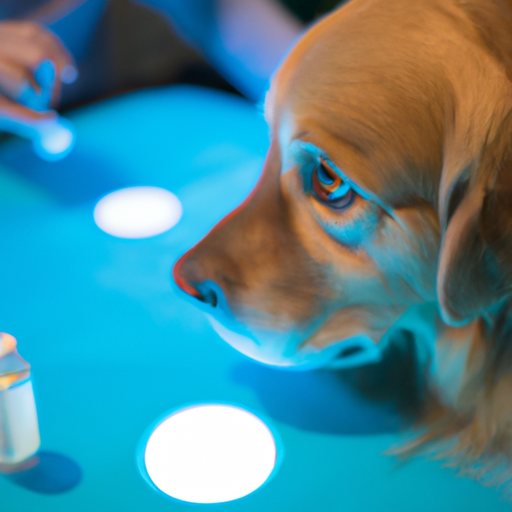1. Understanding Dry Eye in Dogs
As a caregiver to your beloved canine companion, you are often the first line of defense when it comes to their health. One common issue that can affect dogs is KCS, or Keratoconjunctivitis Sicca, more commonly known as “dry eye”. This condition is characterized by the reduction or absence of tear production, leading to dry, irritated eyes. Just as the desert thirsts for rain, your dog’s eyes yearn for moisture to keep them healthy and comfortable.
2. Recognizing the Symptoms
Your dog cannot tell you in words that their eyes are bothering them, but they can show you. There are several signs that your dog may be suffering from dry eye:
- Persistent scratching or rubbing of the eyes
- Redness or inflammation around the eyes
- Discharge from the eyes
- Changes in the color or appearance of the eyes
Like a detective, you must piece together the clues your dog is giving you. If you notice these symptoms, it could be time to investigate further.
3. Seeking Professional Help
Upon suspecting dry eye, your next step should be to seek veterinary assistance. Your vet can conduct a Schirmer Tear Test to measure tear production and confirm the diagnosis. Think of your vet as the detective’s partner, bringing specialized knowledge and tools to solve the case.
| What is Done | Why it is Done | |
|---|---|---|
| Schirmer Test | Measures tear production | Confirms or rules out KCS |
4. Treating Dry Eye
Once diagnosed, your vet will likely recommend a course of treatment that may include:
- Artificial tears: These can help to keep the eyes moist and alleviate discomfort.
- Medications: Drugs like cyclosporine or tacrolimus can be used to stimulate tear production.
- Surgery: In severe cases, a procedure can redirect a duct from the salivary gland to the eye to provide moisture.
Remember, you are the lighthouse guiding your dog through the storm. Being consistent with treatment will help them navigate towards relief.
5. Maintaining Eye Health
Beyond treating dry eye, maintaining overall eye health is vital. Regular check-ups with your vet, a balanced diet, and keeping your dog’s living environment clean can all contribute to their eye health. Like a gardener nurturing a delicate plant, your care can make all the difference.
Frequently Asked Questions
- What breeds are most prone to dry eye?
-
Breeds such as Bulldogs, West Highland White Terriers, and Shih Tzus are particularly susceptible to dry eye.
-
Can dry eye be cured?
-
While there is no cure, it can be managed effectively with treatment.
-
How often should I apply artificial tears?
-
This will depend on the severity of your dog’s condition and your vet’s recommendation.
-
Can dry eye lead to blindness?
- If left untreated, severe dry eye can cause damage to the cornea and potentially lead to blindness. Regular check-ups and treatment are key to preventing this.
Remember, when it comes to your dog’s health, you are their best advocate. Your vigilance and dedication can help ensure they lead a comfortable, happy life. Now you are equipped with the knowledge to tackle dry eye head-on, like a knight ready to slay a dragon.



